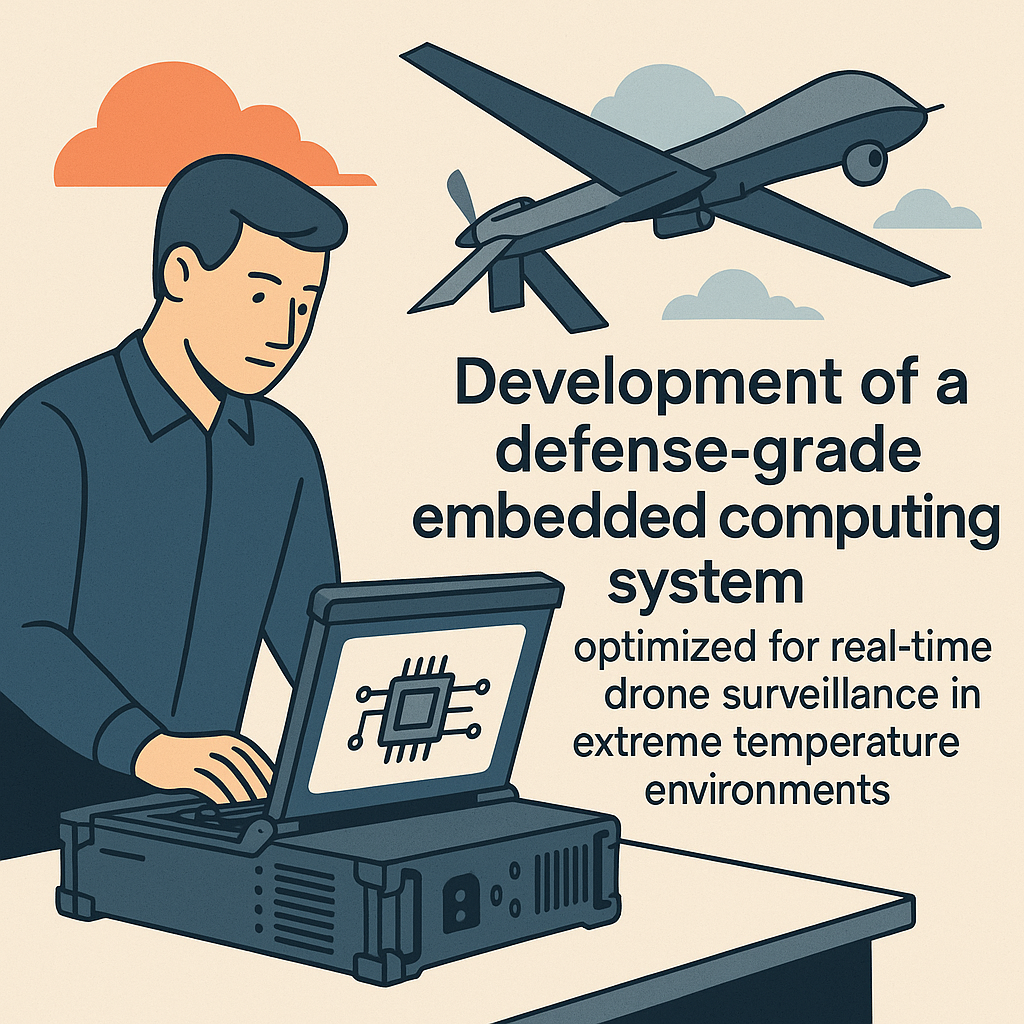Introduction
In recent years, the demand for advanced surveillance systems has increased significantly, particularly for military and defense applications. One critical component of these systems is the embedded computing technology that powers drones. This blog explores the development of a defense-grade embedded computing system optimized for real-time drone surveillance in extreme temperature environments, highlighting the challenges, solutions, and advancements in technology.
Understanding the Requirements
The design of a defense-grade embedded computing system for drone surveillance must address several unique requirements:
- Real-time processing: The system must process data instantly to ensure timely decision-making.
- Extreme temperature resilience: Drones often operate in environments with varying and extreme temperatures, which can impact system performance.
- Power efficiency: Given the limited power supply of drones, the system must be energy-efficient.
- Durability and reliability: The embedded system should withstand harsh conditions while maintaining operational integrity.
- Data security: As drones collect sensitive information, the system must incorporate robust security measures to protect data.
Challenges in Development
Developing a defense-grade embedded computing system involves navigating a range of technical challenges:
- Temperature fluctuations: Components must be designed to function optimally across a wide range of temperatures, which can include extreme heat and freezing conditions.
- Size and weight constraints: Drones require lightweight systems to optimize flight time and maneuverability.
- Signal interference: Embedded systems must operate effectively in environments with potential electronic interference from various sources.
- Integration of sensors: The system must seamlessly integrate multiple sensors for comprehensive surveillance capabilities.
Key Technologies Utilized
To overcome these challenges, several key technologies and methodologies are employed in the development process:
- Advanced materials: Utilizing materials that can withstand extreme temperatures, such as thermal insulation and heat-resistant alloys, is crucial.
- Low-power processors: The integration of energy-efficient processors allows for effective real-time processing without excessive power consumption.
- Redundant systems: Implementing redundancy ensures that the system remains operational even if one component fails.
- Robust software algorithms: Algorithms that prioritize data processing and analysis while minimizing resource use are essential for real-time capabilities.
Testing and Validation
Once the development phase is complete, rigorous testing and validation processes are crucial to ensure that the system meets all operational requirements:
- Environmental testing: Systems undergo testing in controlled environments that simulate extreme temperatures and conditions.
- Field trials: Real-world testing with drones in various operational scenarios helps to validate the system’s performance.
- Security assessments: Conducting assessments to ensure that data security measures are effective against potential threats.
Future Directions
The development of defense-grade embedded computing systems for drone surveillance is an evolving field. Future advancements may include:
- Artificial Intelligence: Incorporating AI for enhanced data analysis and decision-making capabilities.
- 5G connectivity: Improved communication capabilities for real-time data transmission and remote operations.
- Modular designs: Allowing for easier upgrades and modifications to the system as technology evolves.
Conclusion
The development of a defense-grade embedded computing system optimized for real-time drone surveillance in extreme environments is a complex yet vital endeavor. By overcoming challenges through advanced technologies, rigorous testing, and innovative solutions, these systems are becoming increasingly capable and reliable. As technology progresses, the integration of AI and improved connectivity will further enhance the effectiveness of drone surveillance, ensuring that military and defense applications remain at the forefront of technological advancements.



